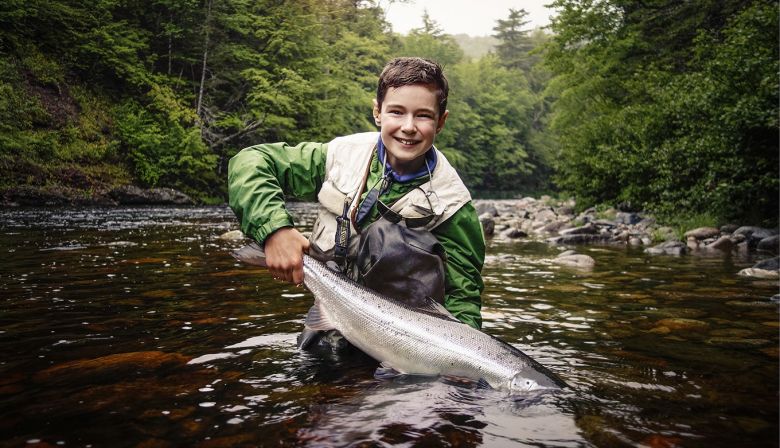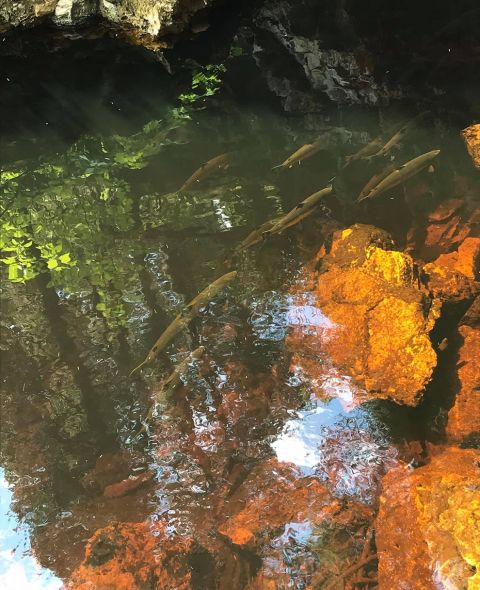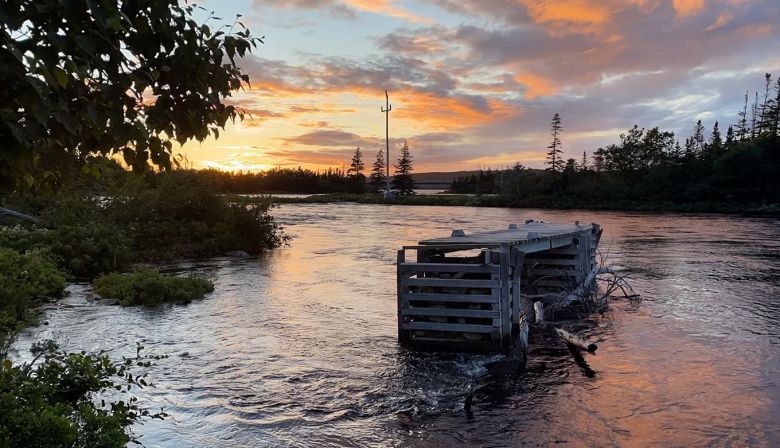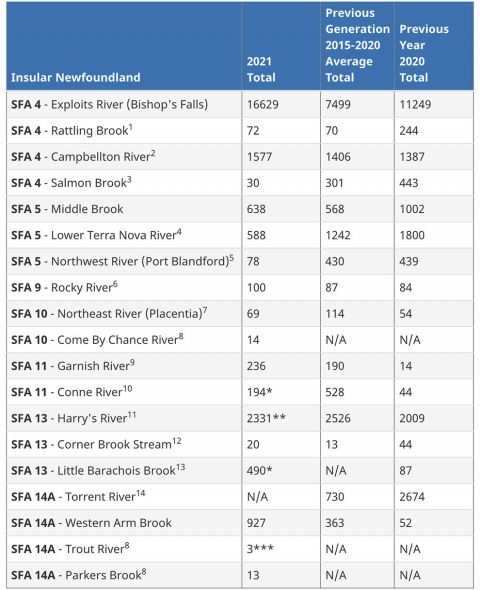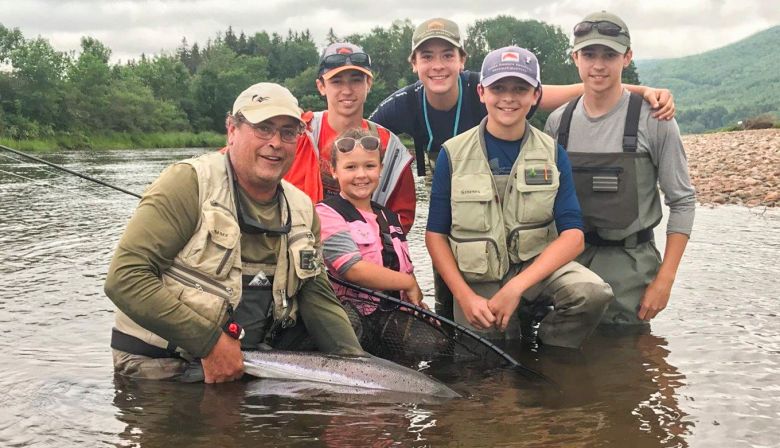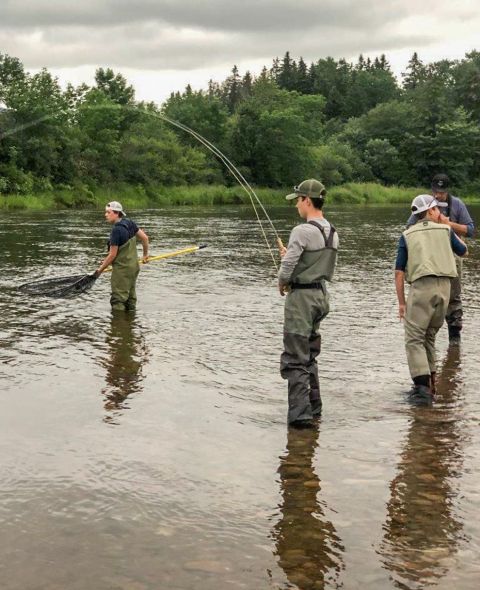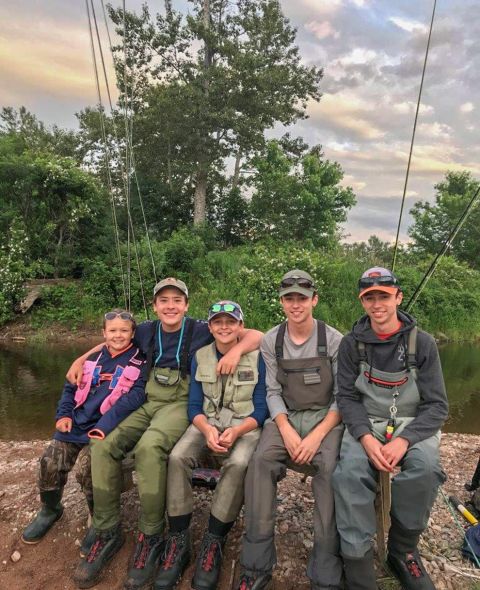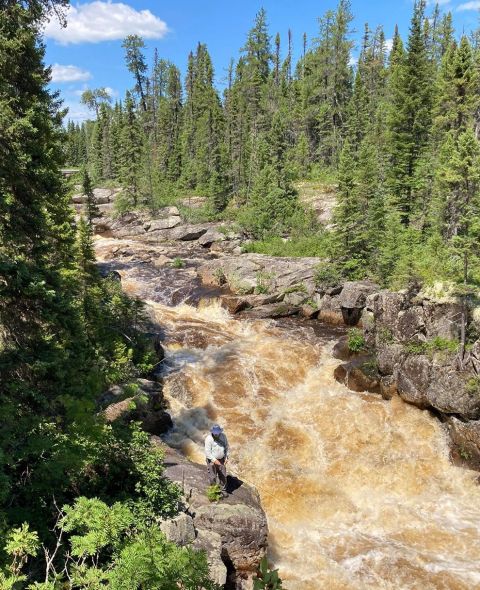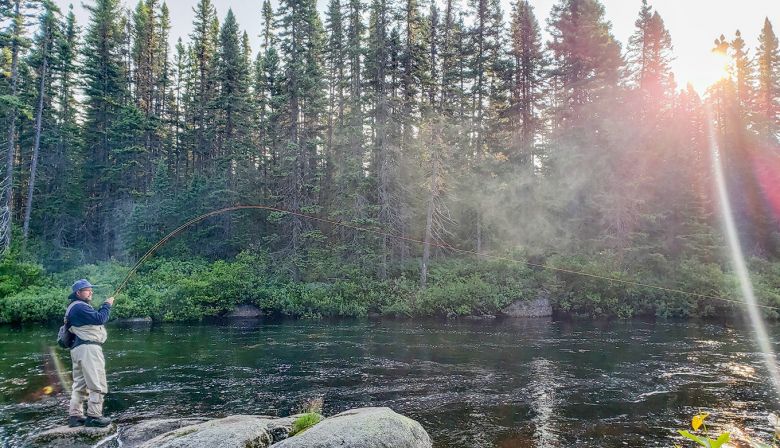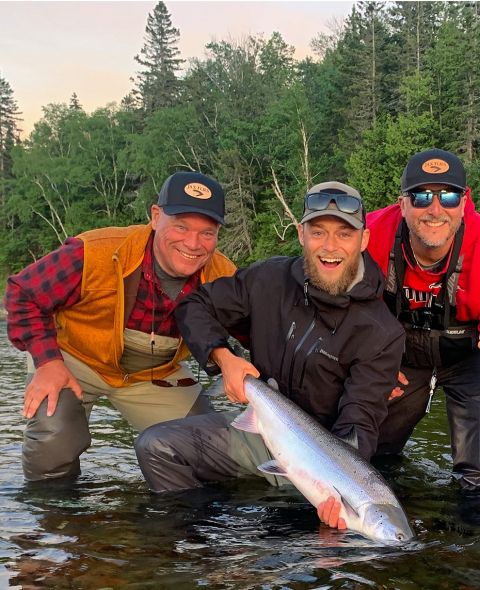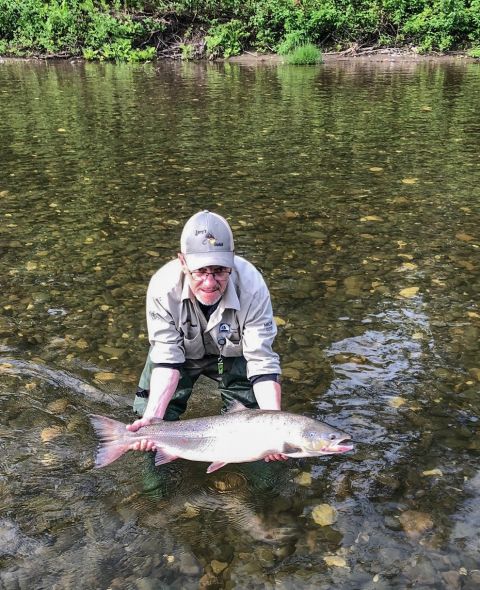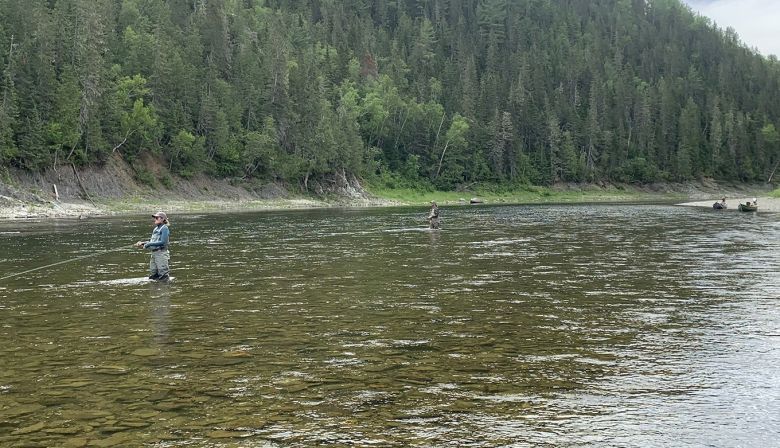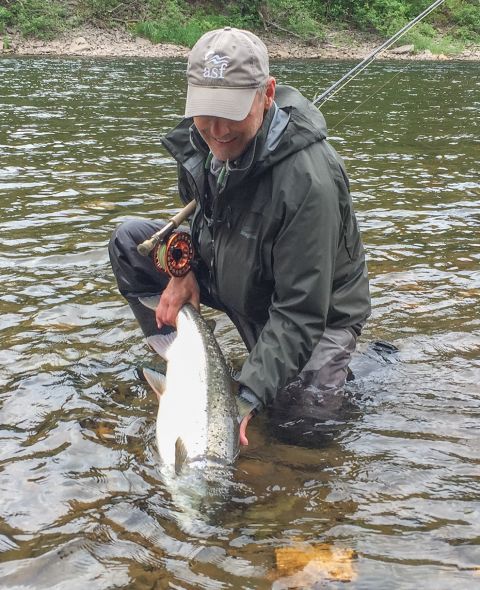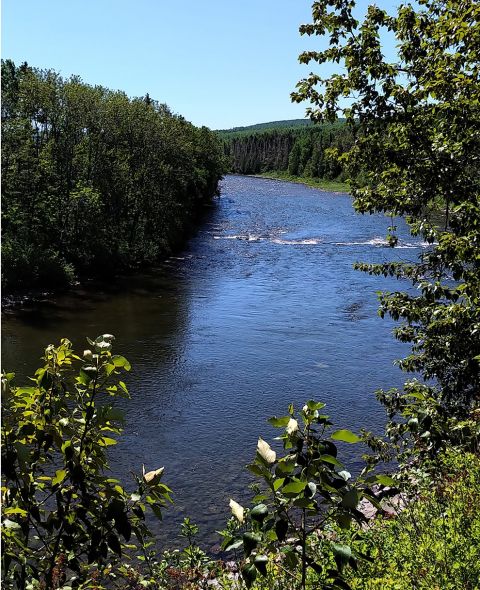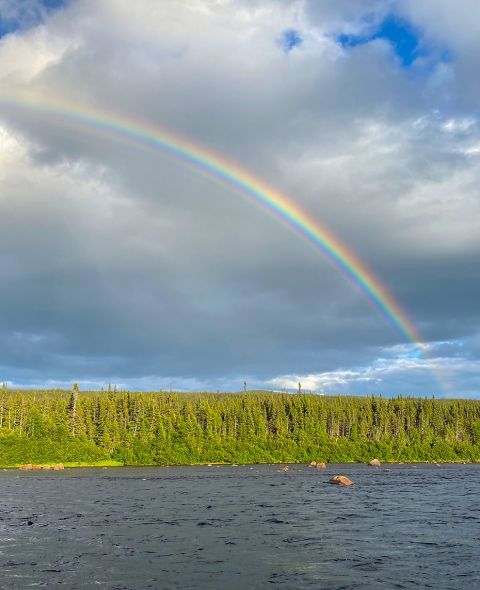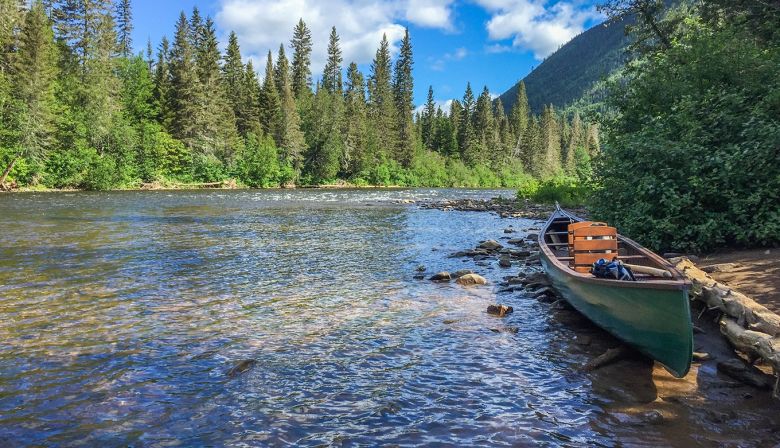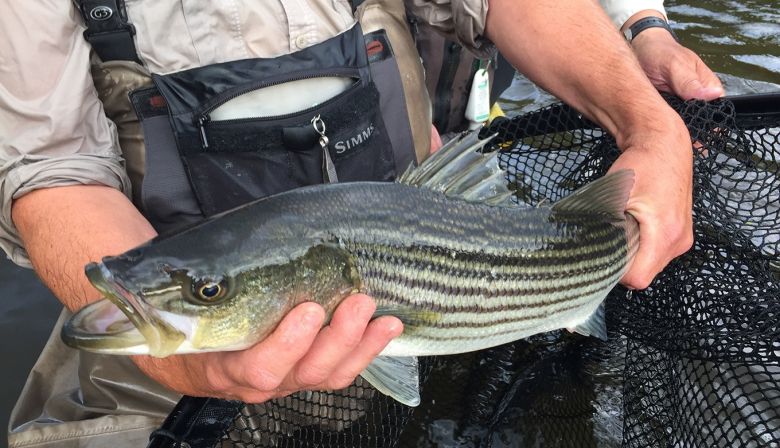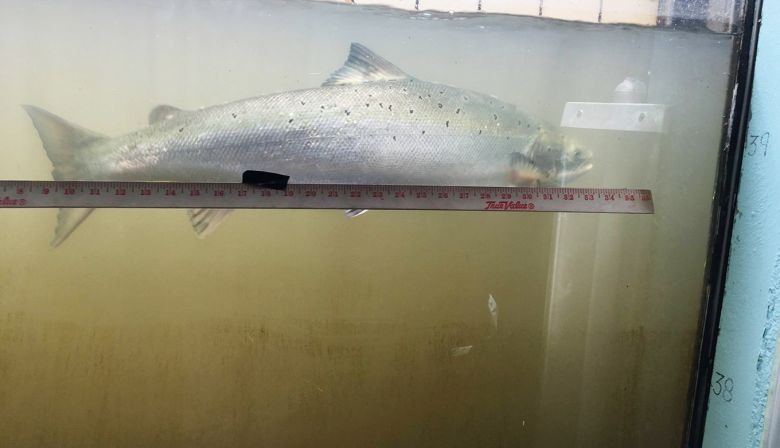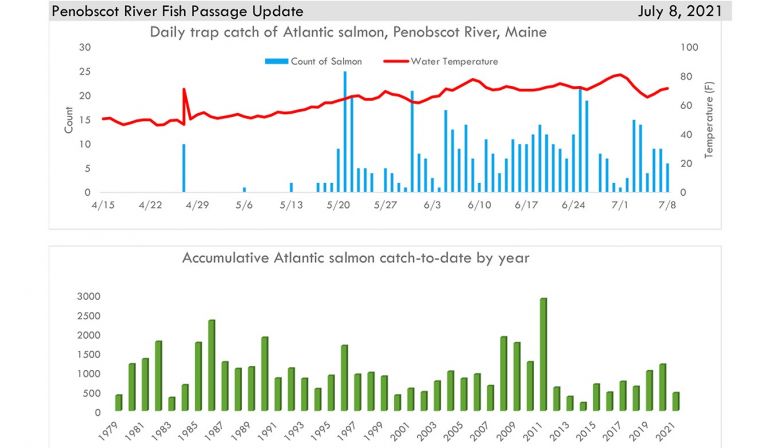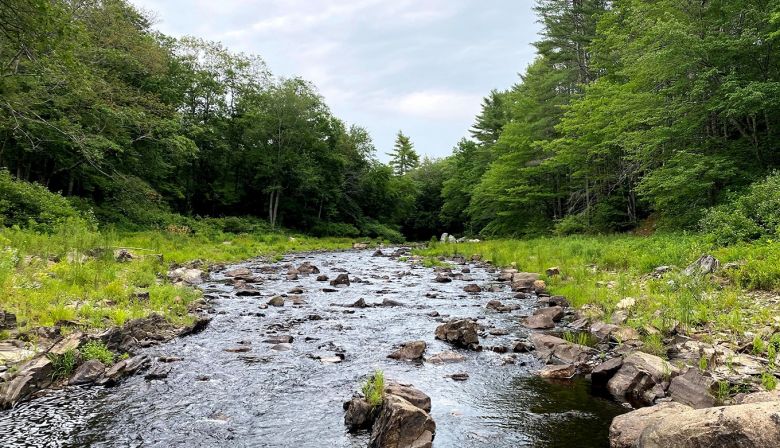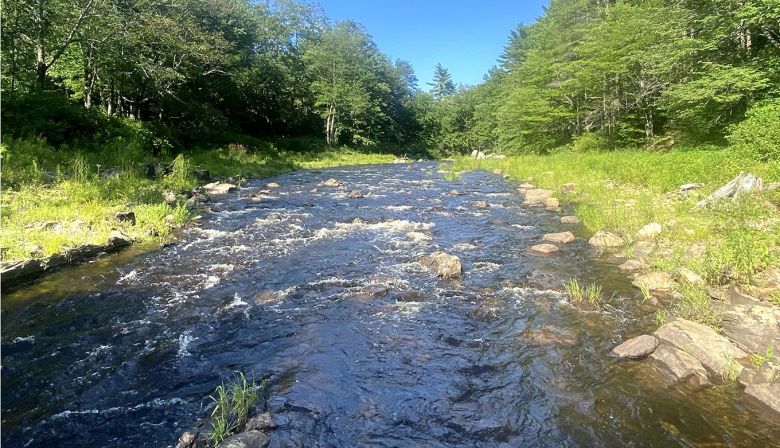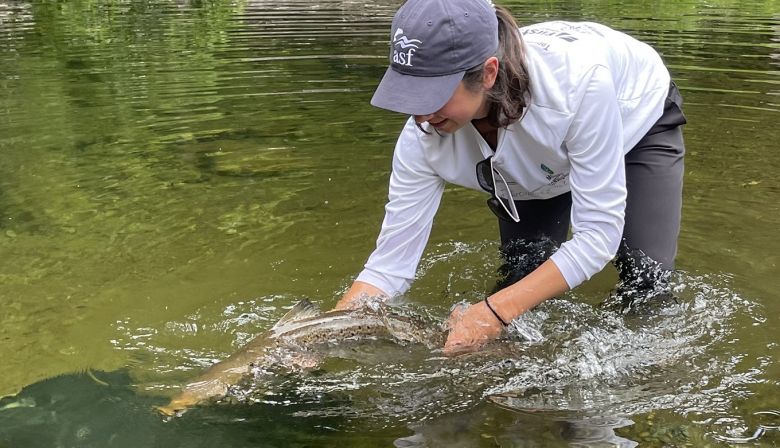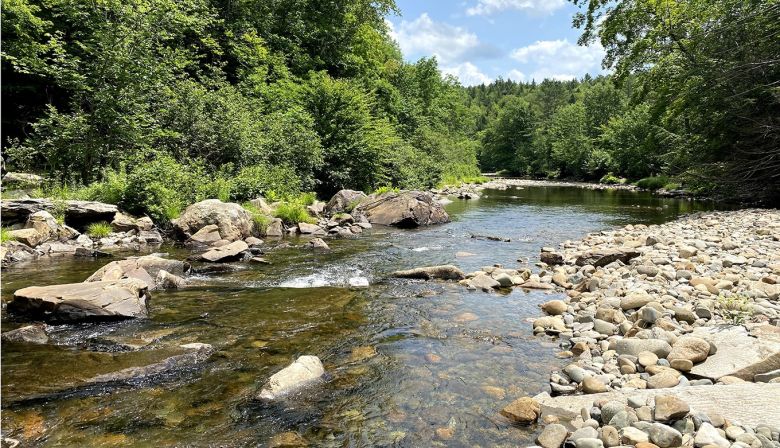It is an incredible sight that if it was in Ireland, Scotland, Wales, or Norway would generate myths and legends. But instead it is one of the most remarkable experiences to witness in Newfoundland: Atlantic salmon congregating and preparing to make a journey through a cavern, in utter darkness, on their way upstream on Beaver Brook.
John Fillier, of Hopewell, NS.., saw this firsthand as part of a very successful salmon angling expedition to northern Newfoundland.
“The water level was somewhat low, and that likely helped us see the salmon there,” he said. It was an exciting moment, unlike anything one can see anywhere else in the North Atlantic world of the Atlantic salmon.
Do the salmon feel any sense of anxiety? Or are they so focused on the sense of smell taking them upstream that it is just another challenge in order to spawn. In the dark of the cavern do they just use their sense of current direction registering on their lateral line, or do they search ahead for a glimmer of light?
For those watching, many questions come to mind, but the fact is that it is the only place in the world to watch this.
John Fillier remarked on some other aspects of the trip with salmon angling friends to the region.
“There were a lot of salmon when we were there. We fished the Main (alias Salmon) River and there were amazing numbers coming in. And the Castor River was great.
